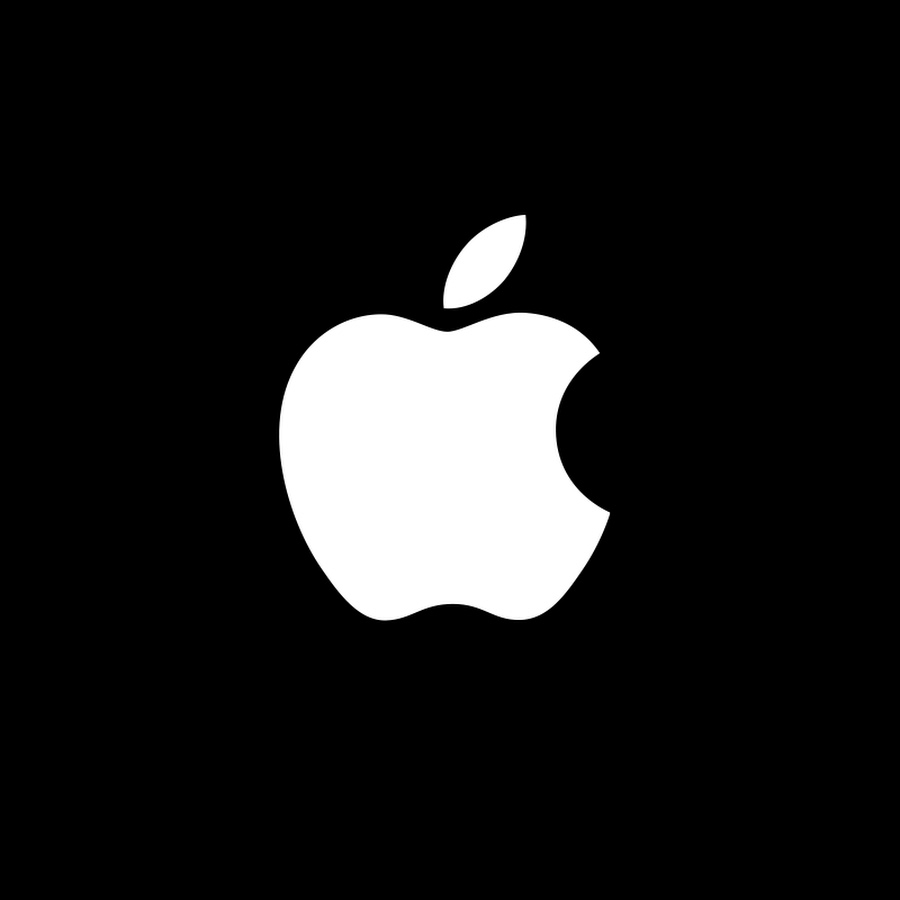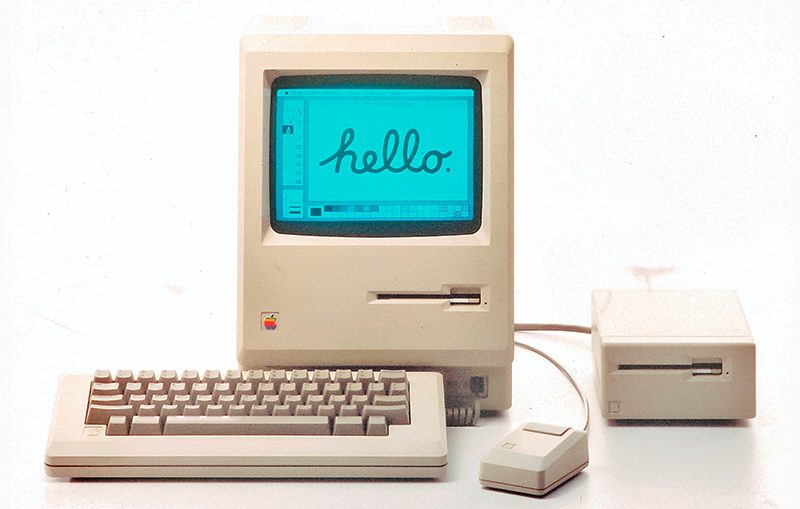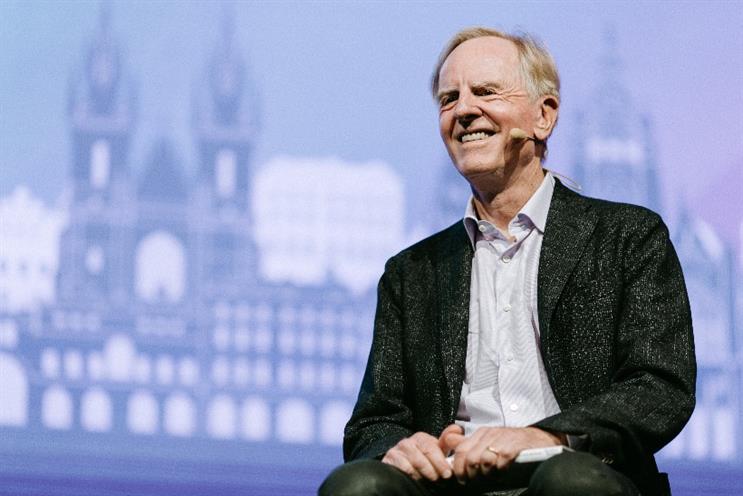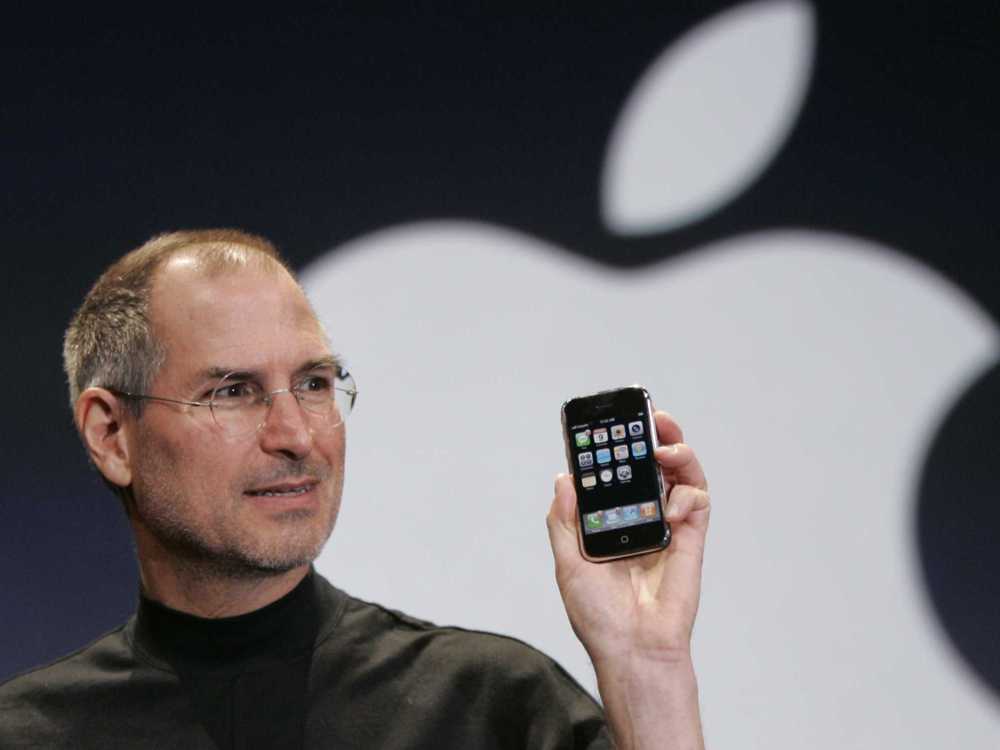Apple
Apple has officially become the First $1 Trillion Company In History!
 It must come as no surprise as Apple continues to astonish the world with its innovative products and services.
It must come as no surprise as Apple continues to astonish the world with its innovative products and services.
The company had to go through years of struggle, various failures, and accomplishments which finally led to the way it stands today – the first-ever company to be valued $1 trillion.

The Foundation Of Apple
In 1976, Apple was founded by three men: Steve Jobs, Steve Wozniak, and Ronald Wayne to sell Wozniak’s hand-built Personal Computer named Apple.
The Apple 1 was sold as a motherboard with CPU, RAM, and basic textual-video chips. It then lacked a built-in keyboard, monitor, case or any other Human Interface Devices (which was later added in 1977).
In July 1976, the Apple 1 went on sale and was sold for $666.66. Steve Wozniak took a special liking for repeated numbers and hence the fancy number as the price.
However, Ronald Wayne decided to leave the company only a couple of weeks after it was founded. Wayne then took a cheque of $800 which would have been worth almost $72 billion 40 years later. Wayne was the one to hand sketch the first Apple logo which was then replaced by the bitten apple logo designed by Rob Janoff in 1977.
The Apple II and III
It was in 1977 that the Apple II was introduced, also by Wozniak. VisiCalc (the world’s first ‘killer-app’), a ground-breaking spreadsheet and calculating software helped the Apple II computers to stand ahead of market leaders Tandy and Commodore PET. VisiCalc gave users an additional reason to buy the Apple II because of its office compatibility. With the introduction of color graphics, the Apple II was able to revolutionize the computer industry.
By 1978, Apple had a real office with several employees and an Apple II production line.
 In the years that followed, revenues grew exponentially for the Apple company doubling every four months. Their yearly sales grew from $775,000 to $118 million between September 1977 and September 1980 (average annual growth rate of 533%).
In the years that followed, revenues grew exponentially for the Apple company doubling every four months. Their yearly sales grew from $775,000 to $118 million between September 1977 and September 1980 (average annual growth rate of 533%).
Jobs and several employees were allowed to visit the Xerox PARC lab in 1979. It is world-famous for the laser printer, mouse, ethernet networking and other technological accomplishments. Jobs and his engineers visited the PARC campus in return for the option to buy 100,000 shares of apple for $10 a share.
By the year 1980, the competition was growing difficult with IBM and Microsoft in the market. Apple released Apple III in the same year to compete with these companies in the corporate computing market. The Apple III was not as successful due to a design flaw. To reduce noise, Jobs insisted computers not have fans or vents which in turn created problems due to dangerous overheating. Thus, the Apple III lost to IBM computers.
The Macintosh
 After being replaced by the Lisa team, Jobs became the leader of the Macintosh team. The Apple Macintosh is known as the most user-friendly computer to date. It is also known as the first mass-market personal computer to feature an integral GUI and mouse. What Is SThe Macintosh, unlike Lisa, was a success thanks to the intense marketing with the iconic “1984” commercial directed by Ridley Scott which aired during the Super Bowl and never again. Even though the graphics hardware used was very expensive, Apple decided to sell the Macintosh for a price that would put it in the reach of home users. Its black and white graphics and visual abilities attracted design professionals and it was particularly successful in the desktop publishing market due to it’s the same. It had a carrying handle which made it portable and it looked friendly too. The Macintosh was priced at $2,495 and went on sale in January 1984.
After being replaced by the Lisa team, Jobs became the leader of the Macintosh team. The Apple Macintosh is known as the most user-friendly computer to date. It is also known as the first mass-market personal computer to feature an integral GUI and mouse. What Is SThe Macintosh, unlike Lisa, was a success thanks to the intense marketing with the iconic “1984” commercial directed by Ridley Scott which aired during the Super Bowl and never again. Even though the graphics hardware used was very expensive, Apple decided to sell the Macintosh for a price that would put it in the reach of home users. Its black and white graphics and visual abilities attracted design professionals and it was particularly successful in the desktop publishing market due to it’s the same. It had a carrying handle which made it portable and it looked friendly too. The Macintosh was priced at $2,495 and went on sale in January 1984. Apple without Steve Jobs
 In 1985, as friction grew between Jobs and Sculley, Jobs attempted to oust Sculley by staging a coup which then backfired. Apple’s board took Sculley’s side and removed Jobs from his managerial duties. Jobs then quit his job and founded a new company making advanced workstations name NeXT. Steve Wozniak too left around the same time selling most of his shares saying the company was going in the wrong direction.
In 1985, as friction grew between Jobs and Sculley, Jobs attempted to oust Sculley by staging a coup which then backfired. Apple’s board took Sculley’s side and removed Jobs from his managerial duties. Jobs then quit his job and founded a new company making advanced workstations name NeXT. Steve Wozniak too left around the same time selling most of his shares saying the company was going in the wrong direction. With Jobs now out of the company, the board was free to think about what kind of machines Apple was going to produce. They decided to target high-end markets with more expensive Macs. Steve Jobs was opposed to the idea of hiking the prices and so it was only after he left that they could implement this policy. They agreed that although fewer units may be sold, similar or higher profits are to be achieved. This policy was called “55 or die” which is Jean-Louis Gassée’s rule that the Macintosh II should deliver at least 55% profit per machine.
With Jobs now out of the company, the board was free to think about what kind of machines Apple was going to produce. They decided to target high-end markets with more expensive Macs. Steve Jobs was opposed to the idea of hiking the prices and so it was only after he left that they could implement this policy. They agreed that although fewer units may be sold, similar or higher profits are to be achieved. This policy was called “55 or die” which is Jean-Louis Gassée’s rule that the Macintosh II should deliver at least 55% profit per machine.The Decline of Apple
 Apple’s “55 or die” policy backfired in the last years of the decade when IBM clones were getting cheaper and Microsoft’s influence started to rise. Even though Macs offered an excellent library of software, they were limited. Windows 3.0, on the contrary, was on sale for cheap commodity computers.
Apple’s “55 or die” policy backfired in the last years of the decade when IBM clones were getting cheaper and Microsoft’s influence started to rise. Even though Macs offered an excellent library of software, they were limited. Windows 3.0, on the contrary, was on sale for cheap commodity computers.
Apple needed to find its way back in the market and so they introduced a whole new line of computers: the Quadra, Centris, and Performa. The Performa was meant to be a stock item for department stores and other lifestyle outlets as Apple computers were then available only through mail or authorized dealers. Apple also experimented on products like digital cameras, portable CD audio players, speakers, TV appliances, etc, but they were all unsuccessful. Apple’s market shares and stock prices continued to decline.
Rise To Profits
Jobs convinced the board to make him the interim CEO in July 1997. Due to the huge financial losses and a three-year record-low stock price the board agreed with Jobs. Amelio resigned a week later.
 During the 1997 Macworld Expo, Jobs announced Apple was joining hands with Microsoft to create new versions of Microsoft for the Macintosh. He also announced that Microsoft had invested $150 million in non-voting Apple stock. On November 10, 1997, Apple introduced the Online Apple Store.
During the 1997 Macworld Expo, Jobs announced Apple was joining hands with Microsoft to create new versions of Microsoft for the Macintosh. He also announced that Microsoft had invested $150 million in non-voting Apple stock. On November 10, 1997, Apple introduced the Online Apple Store.
Jobs was impressed by the design talent of Jonathan Ive and they paired to rebuild Apple’s status. The iMac was introduced on August 15, 1998, an all in one computer. Jonathan Ive leads the iMac design team and he would later design the iPod and the iPhone. 80,000 units of the iMac were sold in just 5 months as a result of modern technological features and a unique design. Apple’s iTunes music store was introduced in 2003 and the service offered online music downloads for $0.99 per song and also integrated it to the iPod. iTunes became the world’s largest music retailer by 2005.
In 2006, Apple finally decided to switch to Intel-based system architecture. The MacBook Pro was Apple’s first laptop with an intel core processor.
The iPhone
 The iPhone was announced at the Macworld Expo on January 9, 2007. Jobs also announced that Apple Computer, Inc would thereafter be called Apple Inc. as the company had widened its emphasis on consumer electronics as well. 270,000 iPhones were sold during the first 30 hours of its sales and it came out to be known as a “game-changer for the industry”. Widespread success was achieved with the introduction of iPhone, iPod Touch and iPad products.
The iPhone was announced at the Macworld Expo on January 9, 2007. Jobs also announced that Apple Computer, Inc would thereafter be called Apple Inc. as the company had widened its emphasis on consumer electronics as well. 270,000 iPhones were sold during the first 30 hours of its sales and it came out to be known as a “game-changer for the industry”. Widespread success was achieved with the introduction of iPhone, iPod Touch and iPad products. The App Store was launched by Apple in July 2008 to sell third-party applications for the iPhone and iPod-Touch. Within a month, 60 million applications were sold through the App store and it was able to register an average daily revenue of $1 million. Apple also became the third-largest mobile handset supplier in the world thanks to the popularity of the iPhone.
The App Store was launched by Apple in July 2008 to sell third-party applications for the iPhone and iPod-Touch. Within a month, 60 million applications were sold through the App store and it was able to register an average daily revenue of $1 million. Apple also became the third-largest mobile handset supplier in the world thanks to the popularity of the iPhone.
Apple shares hit a staggering $300 in October 2010.
Steve Jobs resigned from his position as CEO due to health factors on August 24, 2011, and was replaced by Tim Cook. Jobs passed away on October 5, 2011, which marked the end of an incredible era for Apple and brought a big diversion in Apple’s history.
However, Apple still continues to influence the markets with ground-breaking technological wonders to date.
Comments
Post a Comment